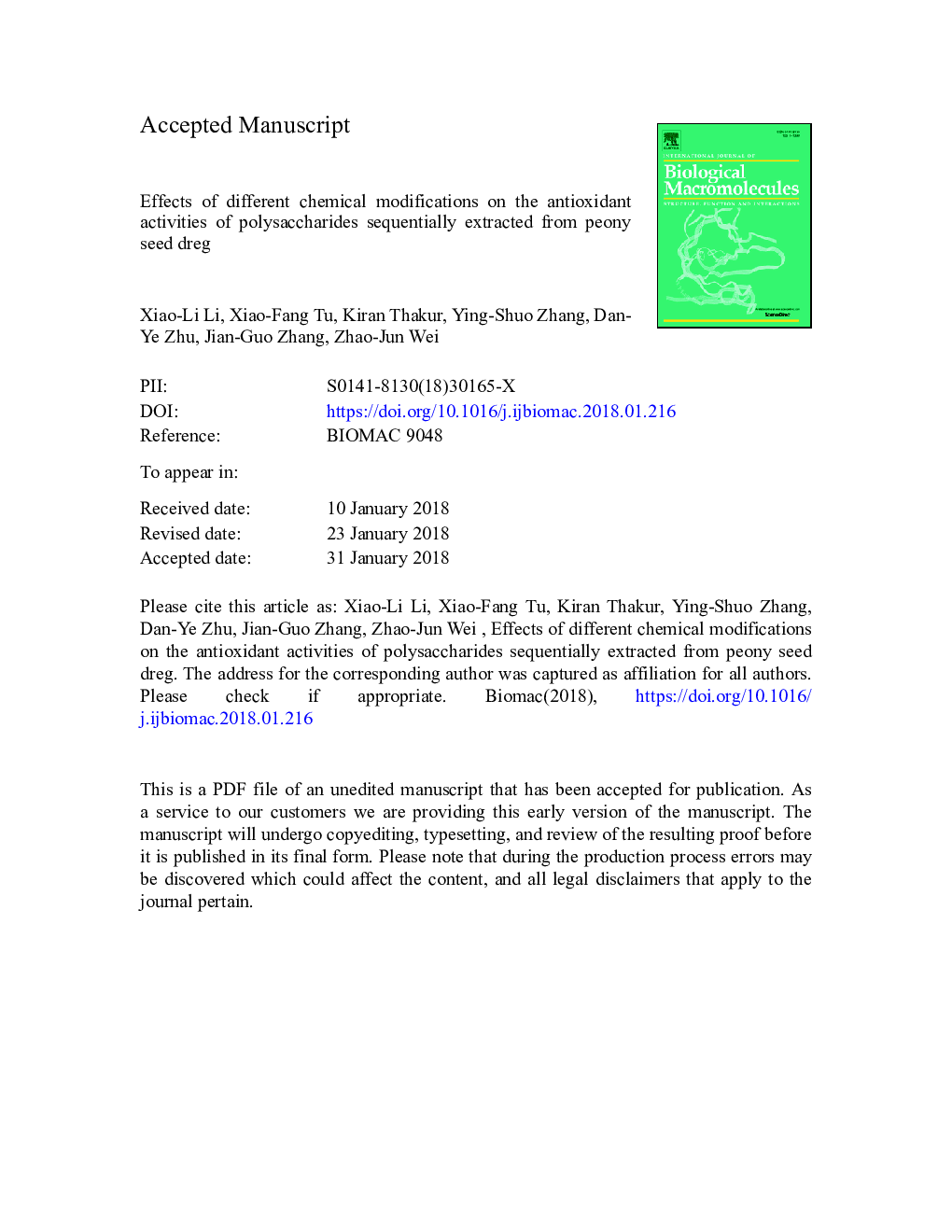| Article ID | Journal | Published Year | Pages | File Type |
|---|---|---|---|---|
| 8327749 | International Journal of Biological Macromolecules | 2018 | 47 Pages |
Abstract
Four types of sequentially extracted peony seed dreg polysaccharides (PSDPs) fractions were modified through sulfation, phosphorylation and carboxymethylation and studied for their in vitro antioxidant characteristics. The modified derivatives showed decreased sugar and protein content, while uronic acid content was elevated as compared to native (un-modified) polysaccharides. Further, modified derivatives shared the similar maximum absorption peaks indicating their homogeneous nature. The Fourier transform infrared (FTIR) spectra of sulfated, carboxymethylated and phosphorylated derivatives showed that hydroxyl groups were converted to OS, COO and POH bonds, respectively. The sulfated polysaccharides (S-PSDPs) displayed the highest reducing ability [S-CASS (1.854)], DPPH radical scavenging ability [S-CASS (95.07%)] and ABTS radical scavenging activity [S-CASS (99.85%)]. The phosphorylated polysaccharides (P-PSDPs) exhibited maximum hydroxyl radical scavenging activity [P-DASS (92.61%)] and ferrous ion chelating ability (99.94% for all the fractions). The carboxymethylated polysaccharides (C-PSDPs) maintained moderately stable antioxidant ability. Overall, the four different PSDPs modified by the same chemical method also resulted into different chemical composition, characteristic absorption peaks and antioxidant attributes. We conclude that the different modifications of the polysaccharide fractions had their own potential significance as new antioxidants for food industry and human health.
Related Topics
Life Sciences
Biochemistry, Genetics and Molecular Biology
Biochemistry
Authors
Xiao-Li Li, Xiao-Fang Tu, Kiran Thakur, Ying-Shuo Zhang, Dan-Ye Zhu, Jian-Guo Zhang, Zhao-Jun Wei,
